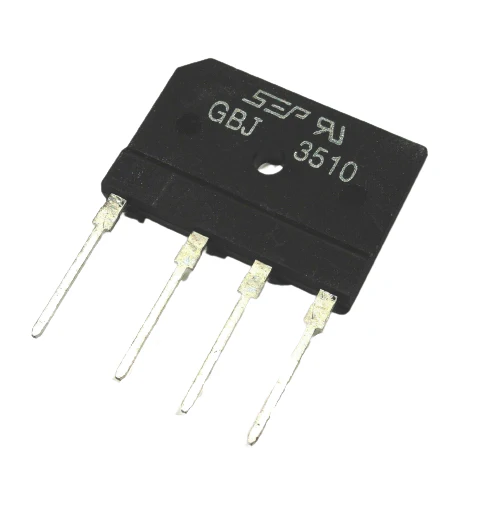Overview Of This GBJ3510 Bridge Rectifier Through-Hole
The GBJ3510 is a bridge rectifier, a type of electrical component used to convert alternating current (AC) into direct current (DC) in electronic circuits. The “through-hole” designation indicates that it is suitable for through-hole mounting on a printed circuit board (PCB).
Application:
Bridge rectifiers are widely used in power supply circuits to provide the necessary DC voltage for powering electronic devices. The GBJ3510 is typically used in applications such as:
- AC to DC power supplies
- Battery chargers
- Motor drives
- LED drivers
- Welding equipment
- Power conditioning systems
Development:
The GBJ3510 Bridge Rectifier Through-Hole component is integrated into circuit designs using through-hole technology. Engineers incorporate it into their PCB layouts, ensuring proper placement and connection of input and output terminals to achieve the desired rectification of the AC input voltage.
Specifications:
| Specification | Details |
|---|---|
| Peak Repetitive Reverse Voltage | Maximum reverse voltage in repetitive mode |
| Average Rectified Output Current | Maximum average current delivered to the load |
| Forward Voltage Drop | Voltage drop across the rectifier when conducting forward current |
| Reverse Leakage Current | Current flowing through the rectifier when reverse-biased |
| Operating Temperature Range | Range of temperatures for reliable operation |
| Package Type | Through-hole package, typically DIP or similar |
| Dimensions | Physical dimensions of the component |
Features:
- High Voltage and Current Ratings: Capable of handling high voltage and current levels, making it suitable for various power applications.
- High Efficiency: Low forward voltage drop and low reverse leakage current contribute to high rectification efficiency.
- Reliable Operation: Designed for reliable performance over a wide range of operating conditions and temperatures.
- Easy Mounting: Through-hole package allows for easy soldering onto a PCB, providing mechanical stability and heat dissipation.


Reviews
There are no reviews yet.